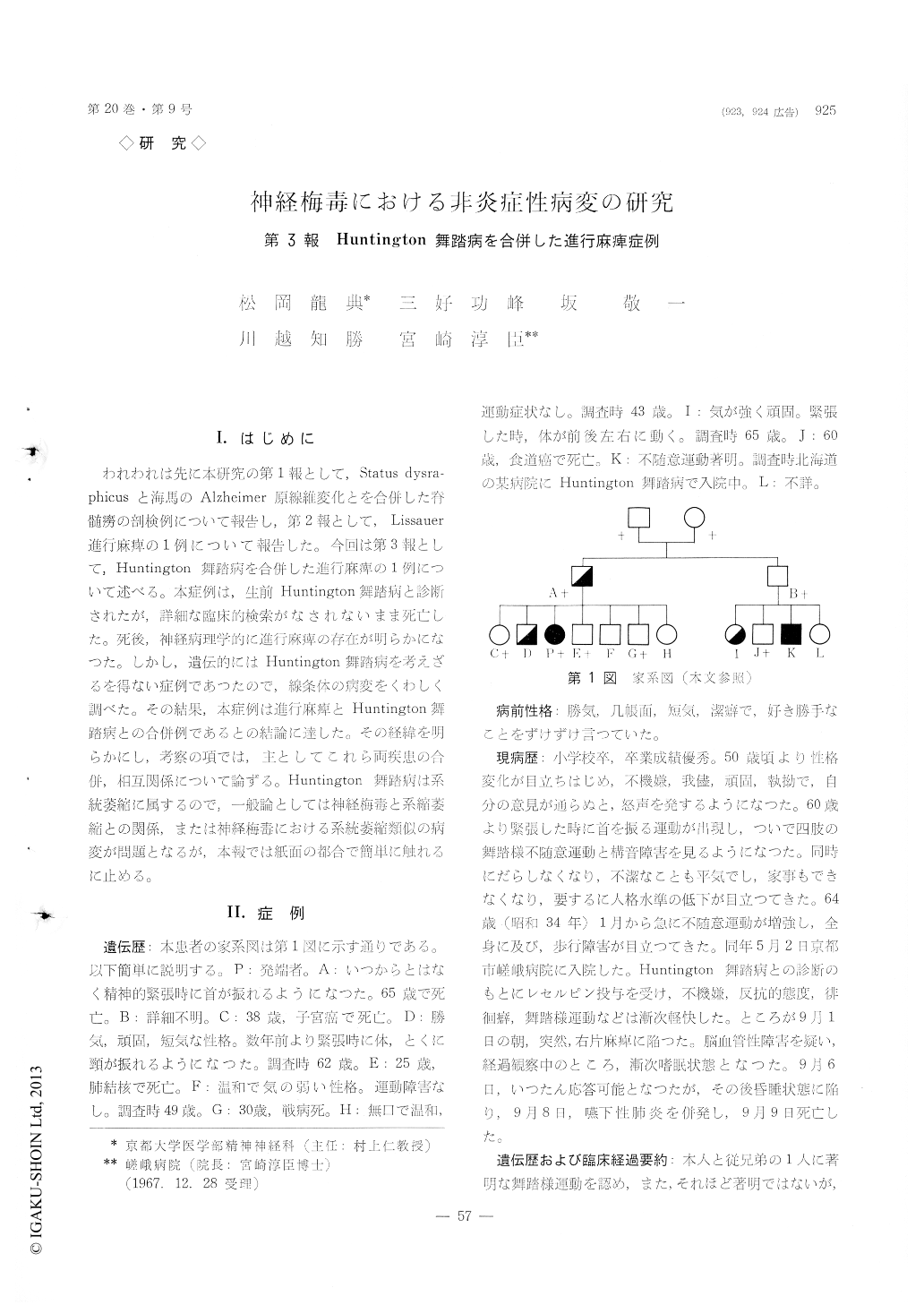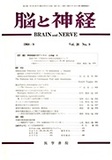Japanese
English
- 有料閲覧
- Abstract 文献概要
- 1ページ目 Look Inside
I.はじめに
われわれは先に本研究の第1報として,Status dysraphicusと海馬のAlzheimer原線維変化とを合併した脊髄癆の剖検例について報告し,第2報として,Lissauer進行麻痺の1例について報告した。今回は第3報として,Huntington舞踏病を合併した進行麻痺の1例について述べる。本症例は,生前Huntington舞踏病と診断されたが,詳細な臨床的検索がなされないまま死亡した。死後,神経病理学的に進行麻痺の存在が明らかになつた。しかし,遺伝的にはHuntington舞踏病を考えざるを得ない症例であつたので,線条体の病変をくわしく調べた。その結果,本症例は進行麻痺とHuntingtion舞踏病との合併例であるとの結論に達した。その経緯を明らかにし,考察の項では,主としてこれら両疾患の合併,相互関係について論ずる。Huntington舞踏病は系統萎縮に属するので,一般論としては神経梅毒と系縮萎縮との関係,または神経梅毒における系統萎縮類似の病変が問題となるが,本報では紙面の都合で簡単に触れるに止める。
An autopsy case of general paralysis combined with Huntington's chorea as well as subdural hema-toma is reported. In family history a cousin suffered from Huntington's chorea, and father, an elder bro-ther and another cousin had occasional shaking of their bodies, especially heads, when they excited, and also had psychopathic personality characterized by the unyielding, obstinate and hasty traits. His-tory : 58-year-old female was admitted to the Saga Hospital. Her premorbid personality had been un-yielding, hasty and fastidious. From the age of 50 on she became egoistic and obstinate, and at the age of 50 occasional shakes of head started. Thereafter, involuntary movements extended to the whole body and dysarthria was added. On May, 1959, when she was 58-year-old, she was admitted to the hospital because of the aggravation of choreiform movements and mental deterioration. On the morning of Septem-ber 1st. the right-sided hemiplegia was noted. She became gradually lethergic and then fell in a coma-tose state. On September 8th, pneumonia was com-bined, and she was expired on the following day. Neuropathologically a large subdural hematoma cov-ered the surface of the convex of the left cerebral hemisphere. Leptomeningeal ecchymoses and edema of white matter in the right frontal lobe were fouml. These findings indicated the recent accident of ce-rebral contusion. Microscopically leptomeninges was diffusely infiltrated with small round cells. In the cerebral cortex the cytoarchitecture was not disin-tegrated, but most of the nerve cells revealed the chromatolysis associated with dark nuclei. Rod cells, processes of which were occasionally stained on Purs-sian blue reaction, were numerously found throu-ghout the cerebral cortex. Perivascular round cell infiltration was also observed. In the striatum small-sized nerve cells were reduced in number, and re-maining nerve cells exhibited the feature of simple atrophy. Astrocytes were proliferated in a moderate grade. Discussion : Clinico-pathological correlation of the case was explained and the problem of "chorea-paralysis" was discussed.

Copyright © 1968, Igaku-Shoin Ltd. All rights reserved.


